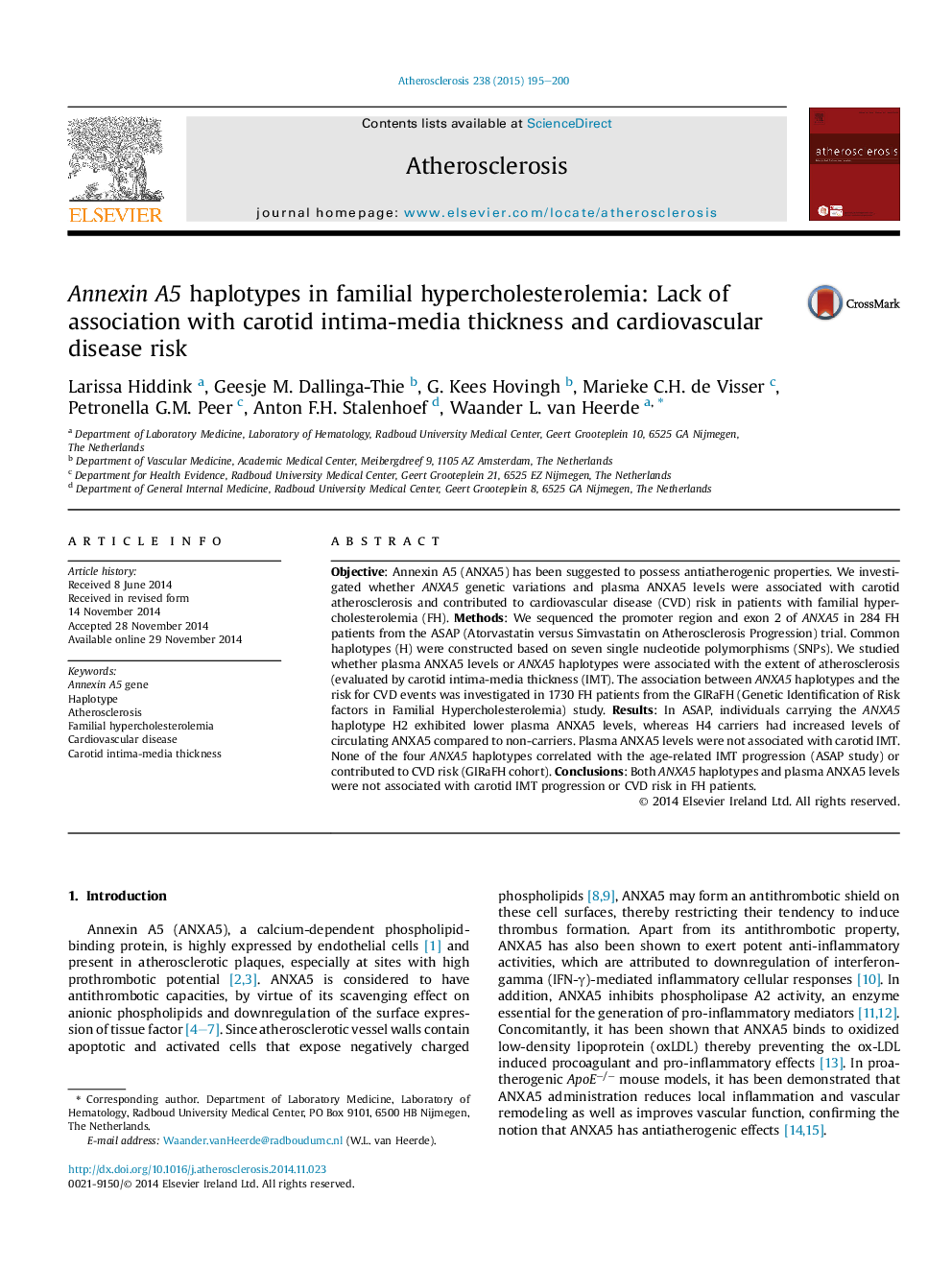| Article ID | Journal | Published Year | Pages | File Type |
|---|---|---|---|---|
| 5945500 | Atherosclerosis | 2015 | 6 Pages |
â¢ANXA5 haplotypes partly determine the variability of plasma ANXA5 levels in familial hypercholesterolemia patients.â¢Plasma ANXA5 levels do not correlate with carotid IMT.â¢ANXA5 haplotypes are not associated with carotid IMT parameters in familial hypercholesterolemia patients.â¢ANXA5 haplotypes do not affect CVD risk in familial hypercholesterolemia patients.
Objective: Annexin A5 (ANXA5) has been suggested to possess antiatherogenic properties. We investigated whether ANXA5 genetic variations and plasma ANXA5 levels were associated with carotid atherosclerosis and contributed to cardiovascular disease (CVD) risk in patients with familial hypercholesterolemia (FH). Methods: We sequenced the promoter region and exon 2 of ANXA5 in 284 FH patients from the ASAP (Atorvastatin versus Simvastatin on Atherosclerosis Progression) trial. Common haplotypes (H) were constructed based on seven single nucleotide polymorphisms (SNPs). We studied whether plasma ANXA5 levels or ANXA5 haplotypes were associated with the extent of atherosclerosis (evaluated by carotid intima-media thickness (IMT). The association between ANXA5 haplotypes and the risk for CVD events was investigated in 1730 FH patients from the GIRaFH (Genetic Identification of Risk factors in Familial Hypercholesterolemia) study. Results: In ASAP, individuals carrying the ANXA5 haplotype H2 exhibited lower plasma ANXA5 levels, whereas H4 carriers had increased levels of circulating ANXA5 compared to non-carriers. Plasma ANXA5 levels were not associated with carotid IMT. None of the four ANXA5 haplotypes correlated with the age-related IMT progression (ASAP study) or contributed to CVD risk (GIRaFH cohort). Conclusions: Both ANXA5 haplotypes and plasma ANXA5 levels were not associated with carotid IMT progression or CVD risk in FH patients.
